Want to be a trillionaire? Try asteroid mining
Science
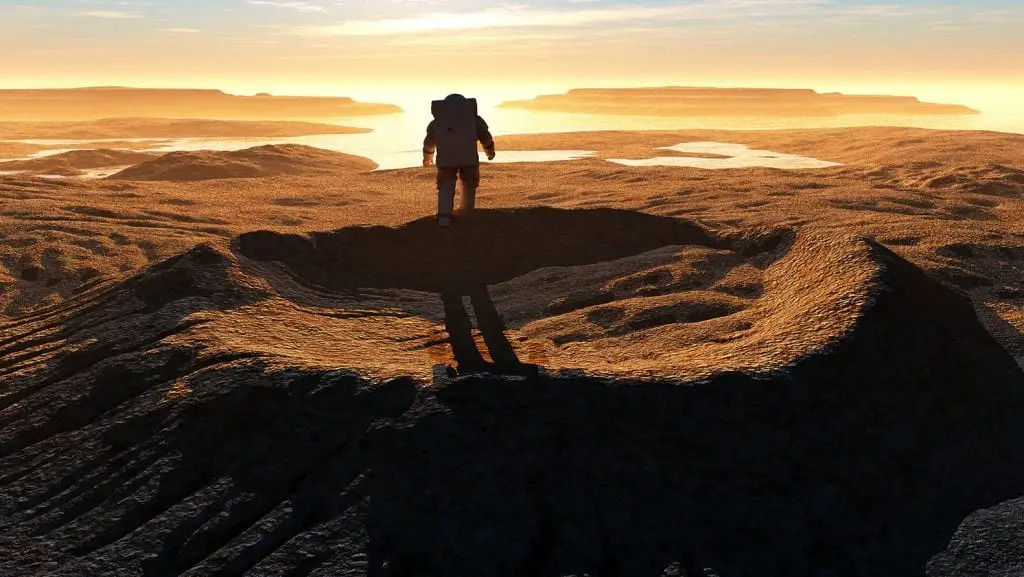
1. Asteroids
Sputniknews
The future is an odd place. What makes it even odder is the possibility of asteroid mining. Of the many ways in which this possibility might seem impractical, ridiculous, or something of the SciFi future, the benefits are enough to have convinced some space pioneers of the project’s worth. Goldman Sachs, for instance, has reported that a football field-sized asteroid could hold as much as $25 to $50 billion in usable resources. This massive amount of untapped wealth has got many people planning—and their plans to tap them are unfolding as we speak.
Not all asteroids are built alike. Some would, in other words, be entirely fruitful places to harvest while others would be absolute dead-end wastes of time. Discerning which is which is not the easiest task in the world. And so, a lot of time has been spent trying to figure out which rocks hold the most value for asteroid mining.
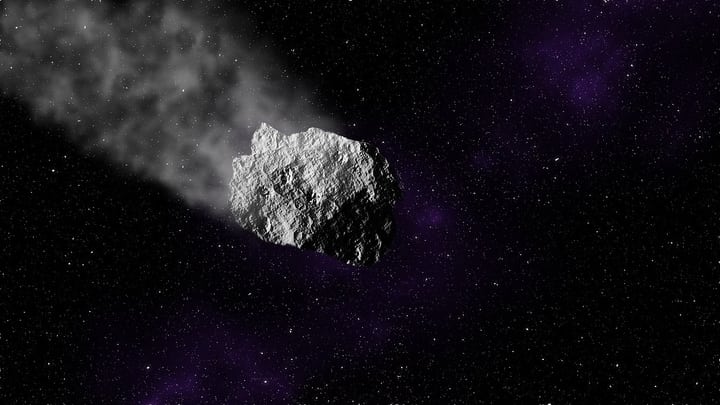
Value Work
Without getting too deep into the distinctions, there are roughly three classes of asteroid. Each of these is composed of different minerals, emits a different wavelength of light, and has a different dollar value for prospective harvesters. Each also tends to exist within a different part of the asteroid belt, making them more or less challenging to approach.
2. C-type
C-type asteroids (the “C” is for carbonaceous) are the least exciting of the bunch. They are composed primarily of carbon, are mostly dark in color, and exist on the outer fringes of our solar system’s asteroid belt. Since carbon is one of the more abundant elements on Earth, these asteroids are not the most enticing prospects for would-be space miners.
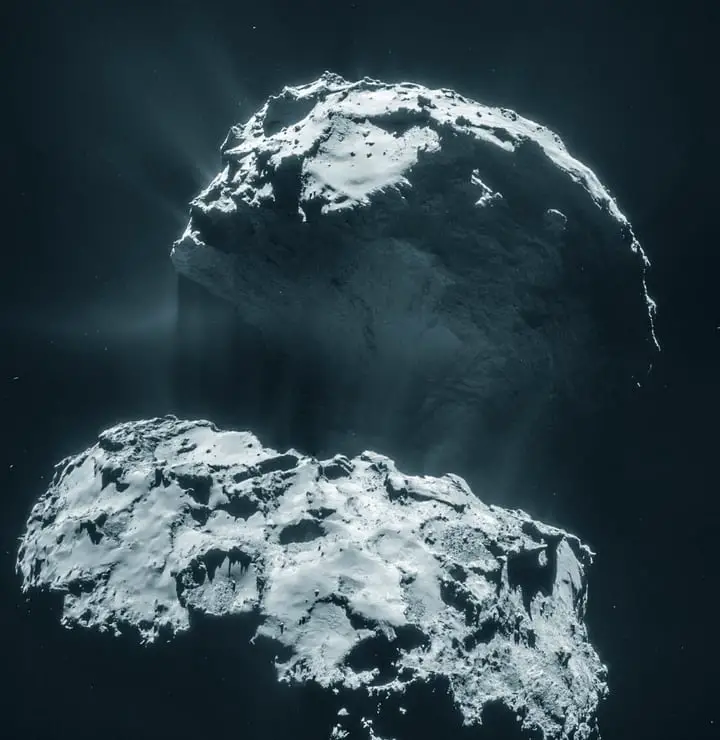
Le Temps
Other than carbon, however, these asteroids do contain measurable volumes of water. This water (as you’ll read about later) can be broken down into its more basic elements–hydrogen and oxygen—to make rocket fuel. They can be used, then, as refueling stations in space, cutting down the amount of fuel you have to travel with.
3. S-type
S-type asteroids (the “S” is for silica) are slightly more exciting than C-type asteroids—but not by much. They float in the far end of our solar system’s asteroid belt, emit a lighter frequency color, and are composed primarily of silicates. While silicates are often shiny, none of this shininess provides any value.
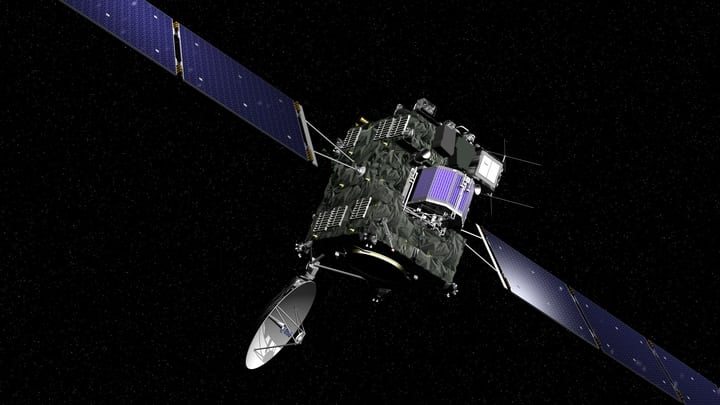
DLR
Silicates are the most abundant mineral in Earth’s crust, making up quartz, feldspar, and a few other rocks. Because of its abundance, the S-type asteroids don’t provide anything really lucrative for prospective miners. Scientists, then, would do their best to help identify, catalogue, and circumnavigate these asteroids, while prioritizing other types of asteroids of higher value.
4. M-type
M-type asteroids (the “M” is for metallic) are the holy grail of asteroid mining. These asteroids are in the middle of the belt, emit a darker light, and are a majority iron. But other than iron, these space rocks have smaller portion of nickel, iridium, palladium, platinum, gold, and other precious metals.
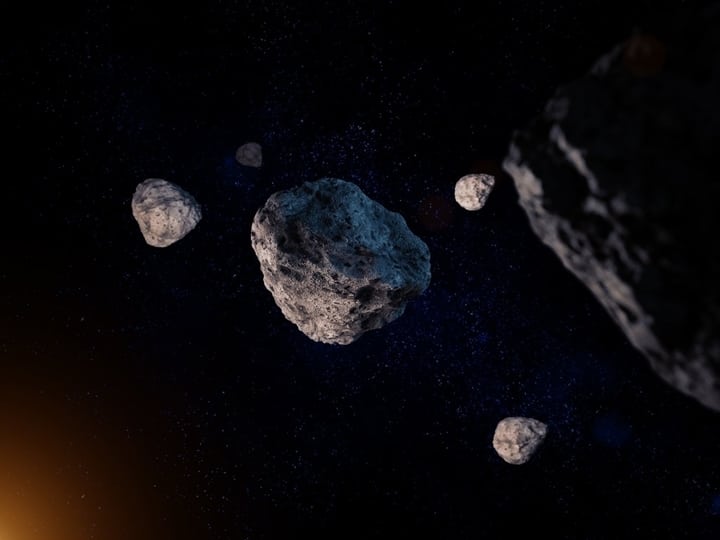
Real Estate of the Summit
The most valuable of these elements is platinum, which is considered the rarest metal on Earth. While there are other precious metals in many of these M-type asteroids, it’s platinum that’s the ultimate driver behind these motivations to harvest space rocks. And so it’s platinum that many people aim to make their bank on.
5. Platinum Or Gold
Platinum is far more valuable than gold. This is primarily because of its rarity–it’s the rarest element in Earth’s crust. But it’s also a base material for many important modern-day technologies like hard disks and fiber optic cables. It’s similarly a common material used in fuel cells for car batteries, a growing commodity as our world turns toward electric cars.
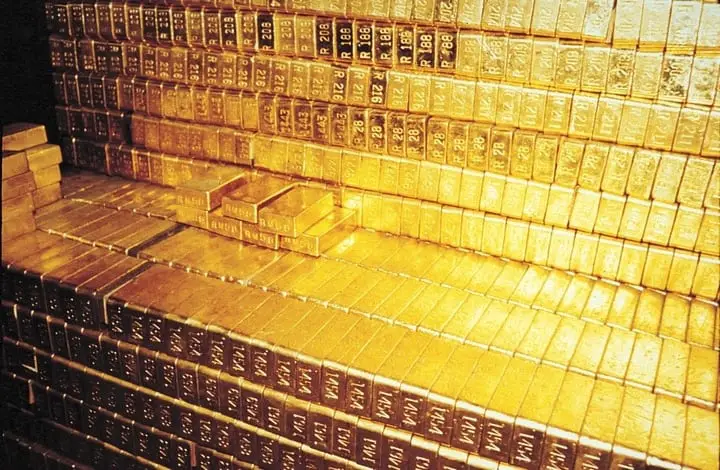
Forbes
Because of its rarity and growing prevalence in the tech industry, the platinum in these asteroids is compelling to those who seek to monetize space. And so, asteroid mining is essentially the goal of extracting loads and loads of platinum from these space rocks; not loads and loads of gold.
6. Problems in the Market
While platinum is currently the rarest of precious metals, mining it into abundance will quickly reverse this fact. As anything rare grows in abundance, its value declines. So, as asteroids are harvested for their precious inner goods, the value of things like platinum is expected to depreciate precipitously.
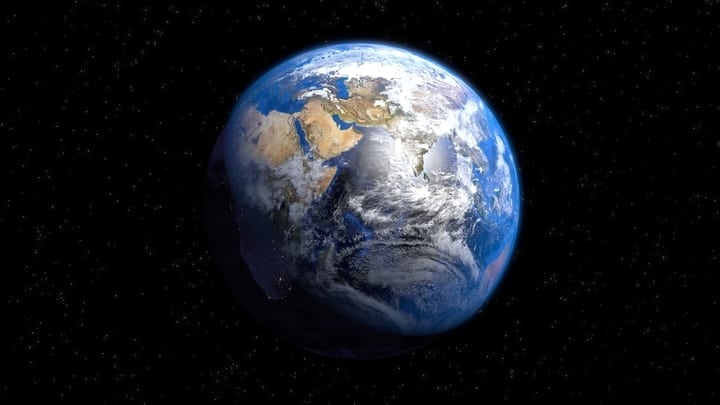
Backgrounds4K
Because of this, most of the big money is expected to go to the initial pioneers. Here, the money will get pulled in before the market adapts to the changes, and those who instigated the harvest will make trillions. This is the mindset of those seeking to venture out into space. Any sort of colonization is at most a secondary concern.
7. Heavy Bombardment
Most of the precious metals we have on earth today are actually the result of ancient asteroids striking Earth’s otherwise barren surface. All of this occurred during what scientists call the period of heavy bombardment. Yes, cosmologists and astronomers have naming conventions that often tell it exactly how it is.
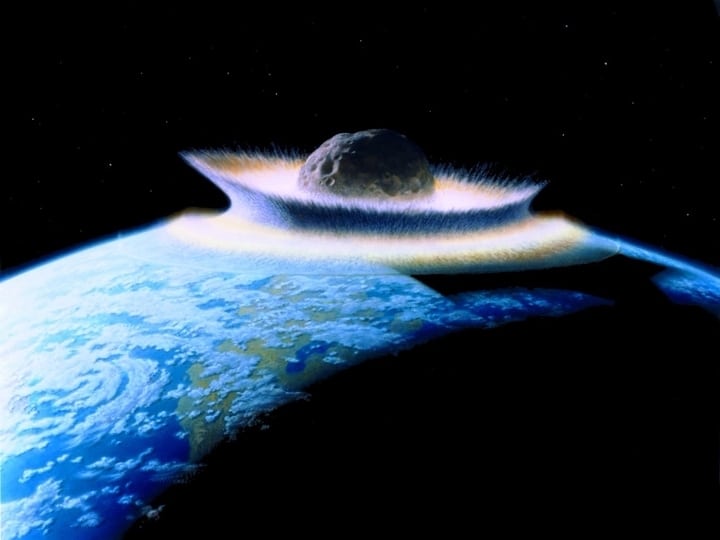
Business Insider
During Earth’s earliest years as a planet, it didn’t have many precious metals. These asteroids, on the other hand, had plenty. And so, at the early period with little atmosphere to cover it, the Earth countless collisions with these asteroids, which gave us the little amount of gold, platinum, and other precious metals we have today.
8. Asteroids Vs Comets
If you didn’t know the difference between asteroids and comets, don’t stress—you’re not alone. The main difference lies in their size and composition. Comets, for instance, are what you see during meteor showers flying by with tails of ice melting in the Earth’s atmosphere; they’re what you always make wishes on that never come true.
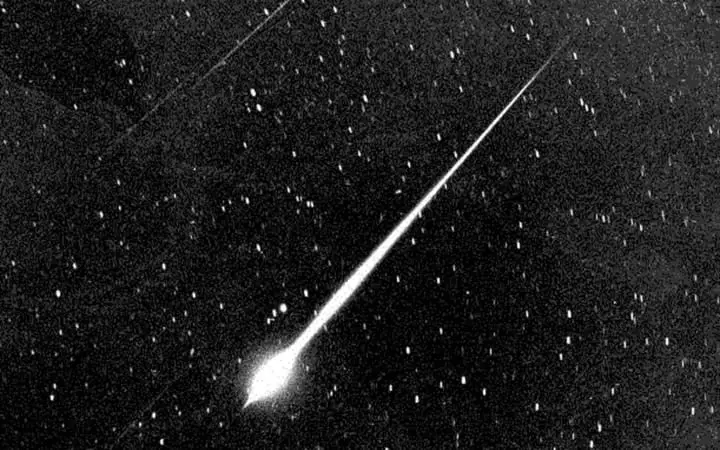
Pics About Space
Asteroids, for the most part, don’t have tails. Instead, they’re just big rocks with the varied mineral compositions we talked about earlier. Other than the tails and composition, though, is that they tend to be significantly larger, ranging in size from a few feet to a couple hundred miles in diameter.
9. The Origins of Asteroids
The asteroids of our solar system came from a time in our distant past—i.e., around the time when the Earth and other planets formed 4.6 billion years ago. These asteroids were the remnants of planetesimals, small orbs of space dust that didn’t aggregate into large enough clusters to form planets.
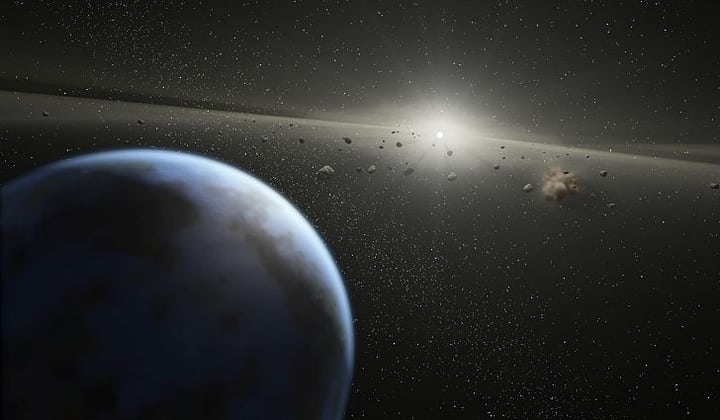
World Atlas
After enough of these collided, broke apart, and crumbled into smaller and smaller pieces, they settled in areas of space where they couldn’t aggregate any further—the plot of land between Mars and Jupiter. Jupiter’s strong gravitational field prevented the space dust from coagulating, and Mars kept circling like it had nothing better to do.
10. The Main Belt
The asteroid belt is where most of our solar system’s asteroids call home; the area they chose to settle after the period of heavy bombardment. Surprisingly, the total mass of the belt isn’t that great—it’s less than that of the moon. It’s about 140 miles across and, unlike what you see in the movies, the odds of hitting one are infinitesimally small.
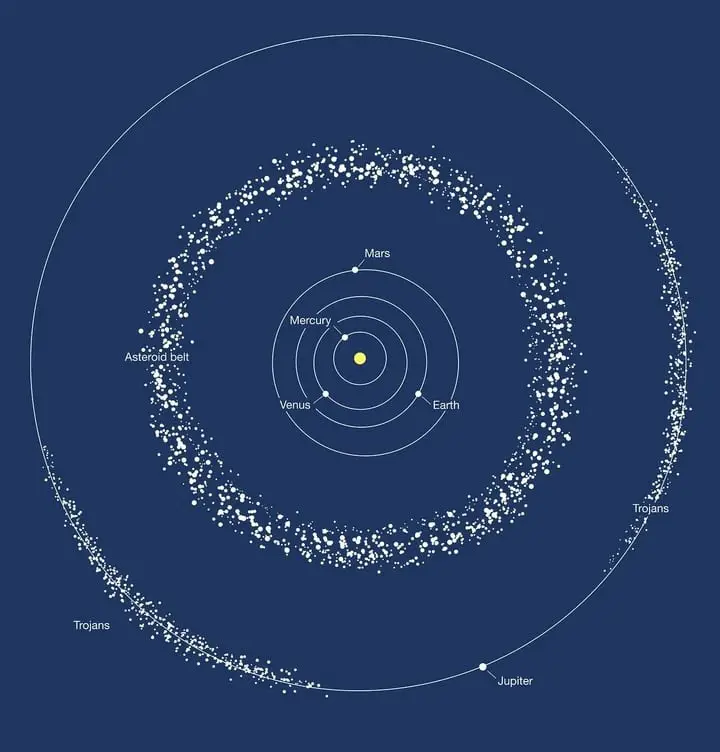
Spacetelescope
Most of the belt’s asteroids are not large enough to turn spherical under the weight of their own gravity. Because of this, many of them have weird shapes. The most common shape? The potato. And while these weird shapes might be fun to look at, they make it surprisingly difficult for space cruisers to land on them.
11. Size Matters
Of all the asteroids that exist of the M-type, not all are viable options for mining. Some are too small, for instance, to yield enough profit to make the venture worth it. Prospective miners, then, have to take this into account before sailing off to wild wild west of space. Big rocks are what we want.
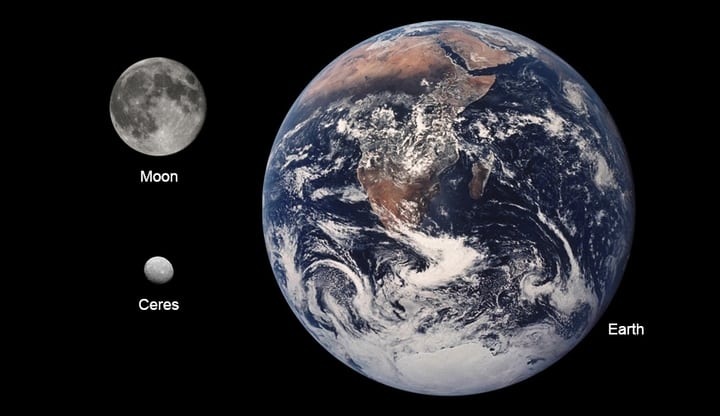
CBC
According to Martin Elvis, an astrophysicist at Harvard, an asteroid must be a minimum of .62 miles in diameter and have 10 parts per million of platinum to be considered valuable. Anything less wouldn’t be able to cover the massive expense of having to get there and mine in the first place.
12. Space Tycoons
While not everyone is jumping at the opportunity to invest in the costly and unpredictable venture of asteroid mining, there are some brave souls willing to front the bill. Of these to-be space tycoons are the heavy hitters we’ve all grown accustomed to—Elon Musk, Jeff Bezos, Larry Page, and Richard Branson, for instance.

Gizmodo
Each of these high-profile entrepreneurs is pushing the boundaries of where our world ends and the future begins. With their help, we will get closer to conquering that final frontier: colonizing that black void called space. While it might seem far off, the companies under these peoples’ leadership will push us slowly closer.
13. Venture Tech
There are several companies through which these venture capitalists seek to implement these changes—Planetary Resources, Deep Space Industries, TransAstra Corporation, Asteroid Mining Corporation. Each of these outfits have their sights set on space, asteroids, and the internal gems they keep. Each also has a similar strategy in mind for mining.
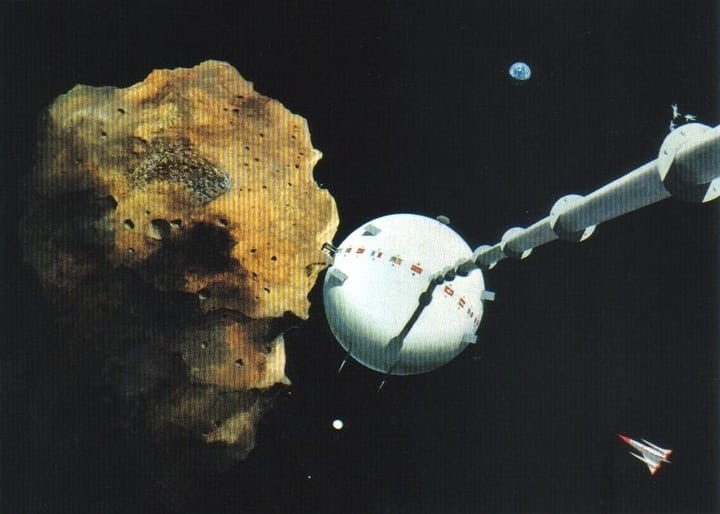
Exonauts.blogspot
Each of these forward-thinking companies is working out plans to conquer the new industry of asteroid mining. While each of these companies aims to approach the problem in a slightly different way, the general plan for entering space is similar. It all starts with water, that most familiar of compounds.
14. The Plan
The plan of these companies is to start by mining asteroids—primarily of the C-type persuasion–for their water. Then, they intend to use this water to create in-space fueling stations. These will then be used by the asteroid-mining machines and other spacecraft to move more freely and easily in space–something they wouldn’t be capable of otherwise.
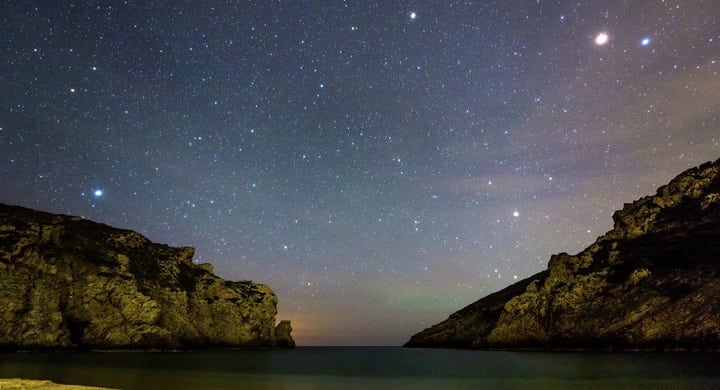
Sputniknews
To actually mine the asteroids, one company (Deep Space Industries) wants to manufacture several low-cost drones that could mine the asteroid in concert. They would then aggregate these resources in a place where they could be easily accessed by the moon or nearby space. Such a strategy would avoid many of the difficulties associated with the venture.
15. Of Water and Fuel
Water is an important resource in space because of its composite materials—hydrogen and oxygen. These two elements are two of the primary ingredients in rocket fuel, so that makes things convenient for miners. Having them in space, then, would enable asteroid miners to not only refuel in space, but to drastically reduce the size of their spacecraft.
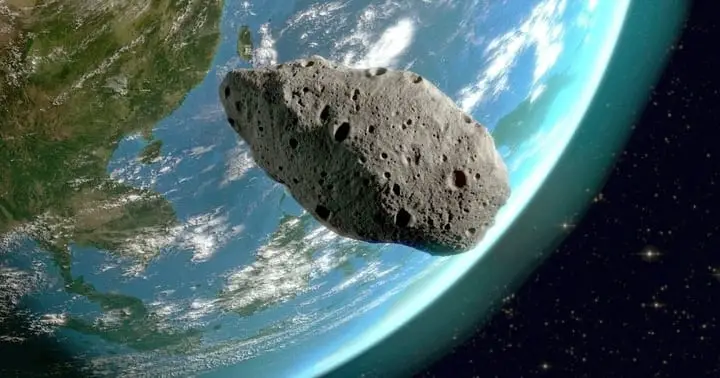
Geology In
Shrinking the amount of space a ship needs for fuel is advantageous for several reasons. The most important of these is probably that it enables them to reduce their size. This makes it far easier for the astronauts to get into space, using far less fuel. Since most spacecraft have always been composed primarily of fuel, this is a plus.
16. Building in Space
Mining would also afford astronauts the ability to build and manufacture their own tools while in space. This is because many of the asteroids contain materials like nickel and cobalt which can be fashioned into tools via 3D printing. So now they’ll be able to save even more space, compounding the ease with which they can travel.
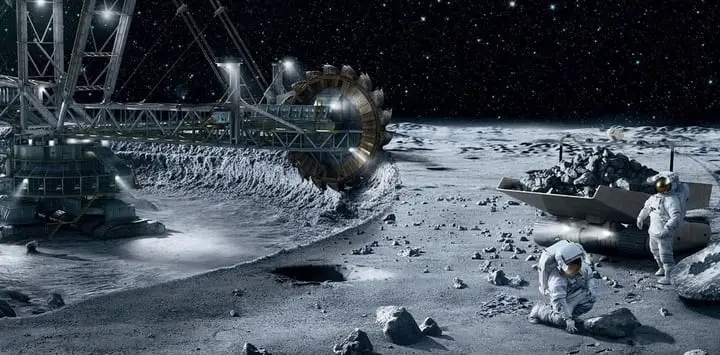
TechWorm
Just like with the weight that comes with carrying all of your own fuel, a major difficulty with mining missions would be the weight of tools. Enabling the astronauts to mine and harvest the materials for their own tools in space—and then to make them via a 3D printer—would significantly lighten the burden faced by asteroid miners.
17. How Many?
Of the 750,000 asteroids we know to exist in the asteroid belt between Mars and Jupiter, only 17,000 are of the M-type—i.e., the type with all the resources we want. What isn’t helpful is that these asteroids are also the in the middle of the belt, making it extraordinarily difficult to extract any materials from them.
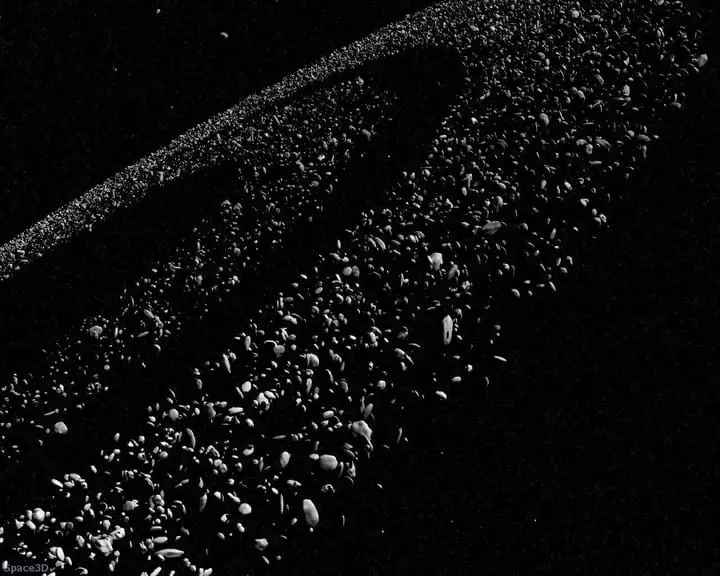
Cafeciberexpress
Of the 750,000 asteroids we know to exist in the asteroid belt between Mars and Jupiter, only 17,000 are of the M-type—i.e., the type with all the resources we want. What isn’t helpful is that these asteroids are also the in the middle of the belt, making it extraordinarily difficult to extract any materials from them.
18. Most Valuable Asteroid
Determining the most valuable asteroid of these few that are actually valuable isn’t exactly easy. You have to know the cost of travel, extraction, and other wildly unpredictable factors that might influence the net gain you’d get from the asteroid. Despite this difficulty, many asteroids have been estimated to be worth well over $100 trillion.
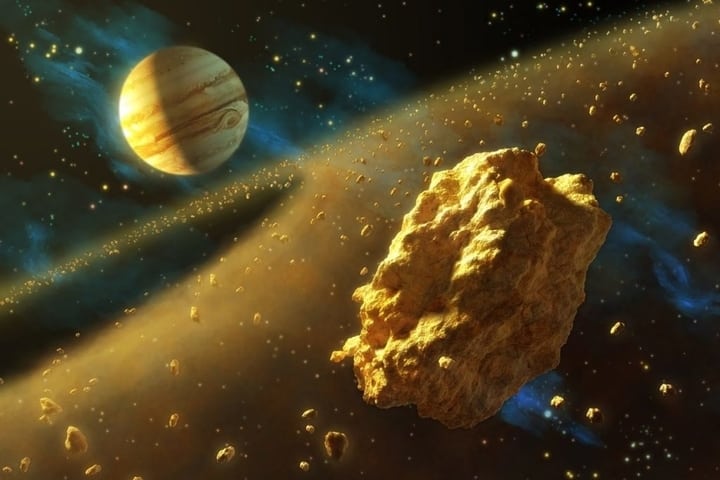
ZME Science
According to Asterank.com, a website that ranks asteroids on their perceived value, dozens to hundreds of asteroids will yield net gains of staggering wealth. One asteroid, for instance, has been given a $15 quintillion price tag. These giant paychecks are the main lure for all the tech giants who’ve set their sights on space.
19. Spectrometry
To tell us which asteroid is of what composition (and therefore where we should plan to mine), we look to light. Each element, for instance, emits a slightly different frequency of the electromagnetic spectrum—some long, some short. Asteroid miners will use these to ascertain which asteroids contain the most valuable composites.

Neutrois
Rocks that are a majority iron and nickel, for instance—i.e., those that make up the more valuable M-type asteroids—emit a certain frequency of red light. When looking into the belt for prospective asteroids, then, this is likely the guiding frequency space miners will look for. Others will likely be used to discern those with platinum from those without.
20. Near-Earth Asteroids
Near-Earth asteroids are those that are the most immediately lucrative for the asteroid mining industry. This is because they are so gosh darn close. Fortunately for us, there are roughly 3,000 of these that have been identified to date, and 10 percent of them are easier to get to than the moon.
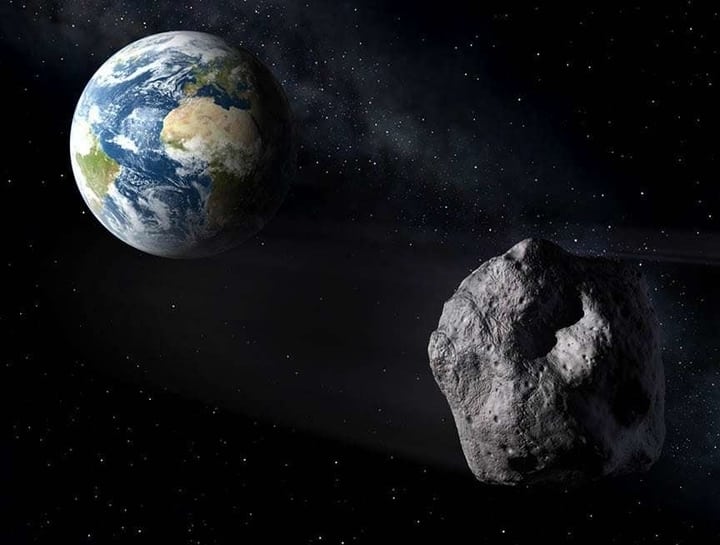
Astrobob.areavoices
Other than their clear value, though, is that these asteroids are potentially dangerous. Because they are so close, many reach distances close enough to Earth’s orbit to inspire fear and panic in scientists and the like. The joke among those in the know is that we’re threatened by giant sums of money.
21. Potentially Hazardous Asteroids
Potentially Hazardous Asteroids are a subset of Near-Earth Asteroids that come within 4.6 million miles of Earth’s orbit. While it may sound like a lot, this number is a lot closer than you’d think. What’s even more disconcerting is that there are roughly 770 of these that have been identified. The number is likely greater.
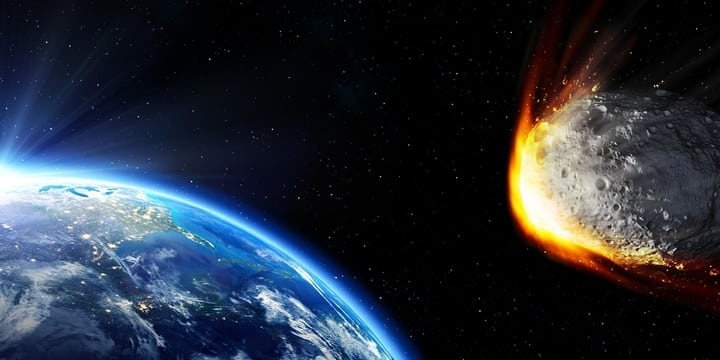
The Daily Dot
While these asteroids are potentially dangerous, they are also the easiest for us to reach. So while they might pose an existential threat to us, all our friends, and all the cute little animals on Earth, they also serve as flying money bags for those with the resources to reach and harvest them.
22. Challenges and Dilemmas
There are a litany of challenges facing those who aim to mine these asteroids, however. Among the many of these challenges (other than what we already mentioned) are the challenges in mapping and landing. While these problems are not completely insurmountable, they do pose complex dilemmas for those who intend on mining.
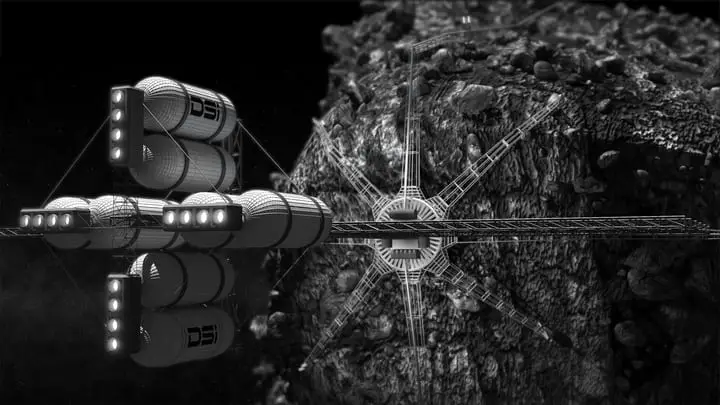
Deep Space Industries
To conquer such problems, space companies have hatched numerous plans they think will be effective. While these plans likely won’t account for the countless and unpredictable dilemmas asteroid barons will inevitably face, they do provide a rough estimate for how they will map and land on these asteroids. Only time will tell of their plans’ efficacy.
23. Mapping
Mapping is a necessity because of the inconsistent shape of many asteroids. Many, if you remember, are shaped like weird potatoes. Because of this inconsistency in shape, size, and orientation, you can’t have one inflexible plan for landing and mining. Instead, you need a plan that can adapt to the specific qualities of each asteroid.
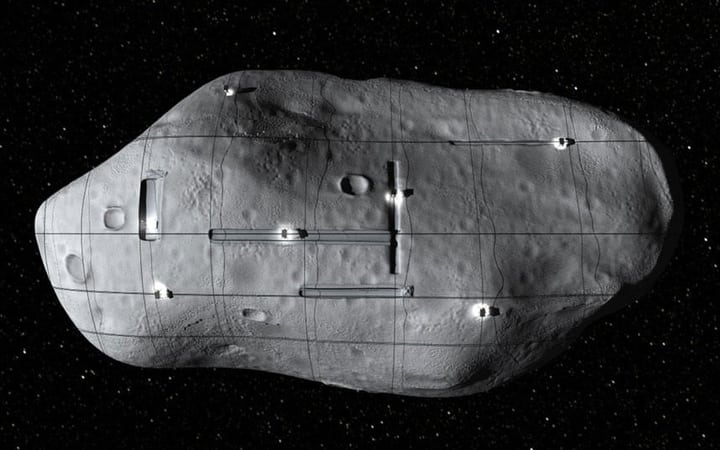
The Daily Telegraph
Mapping the asteroids is thought to be the first step toward making mining possible. Once we have the maps, we can coordinate how the machines will land, mine, and extract the valuable resources from the asteroids. Parallels have been drawn to how the US Geological Survey helped original miners by mapping geology.
24. Landing
Landing is the other major problem for prospective space miners. First off, there is very little gravity on most of these asteroids. This means that to land and drill, the rover must in some way be attached to the rock. If unattached, it will just push itself off the rock once it starts to bore. This is bad.
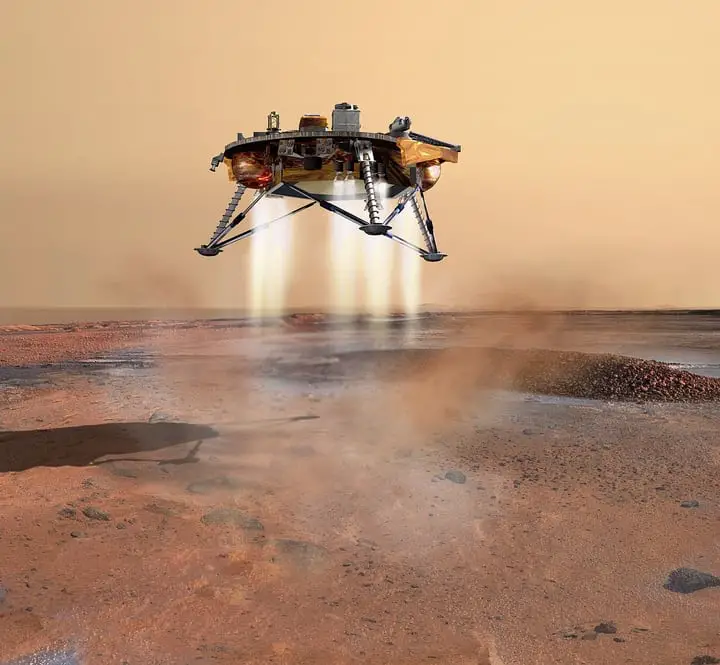
Wikipedia
To manage this problem, some companies plan to utilize a harpoon-like thing, shooting the rock, burrowing in, and attaching itself. When fixed to the rock in such a way, you can dig and extract without the fear that the spacecraft will just push itself back into space. This is good news.
25. Red Tape in Space
Space isn’t all fun and games, however. One of the perils of this new frontier is ownership. How can you tell who owns which asteroid? There are so few to actually mine, so how will we determine who gets which one? Will we have asteroid pirates? Such conundrums haven’t yet been satisfactorily resolved.

National Space Centre
Terrestrial disputes about who owns what can be difficult to mediate. And, if asteroid tycoons want to venture into the depths of black that space contains, they will have to first remove the red tape from these space rocks. Such bureaucracy, however, is thick, unrelenting, and annoying beyond reason. Some steps, however, have been taken.
26. The Outer Space Treaty
The Outer Space Treaty was ratified in 1967. Unfortunately, it doesn’t say anything about ownership of asteroids. What it does state is that you can use space resources freely, but that you can’t literally own the moon or another celestial body. This isn’t good necessarily news for those with aims to mine.
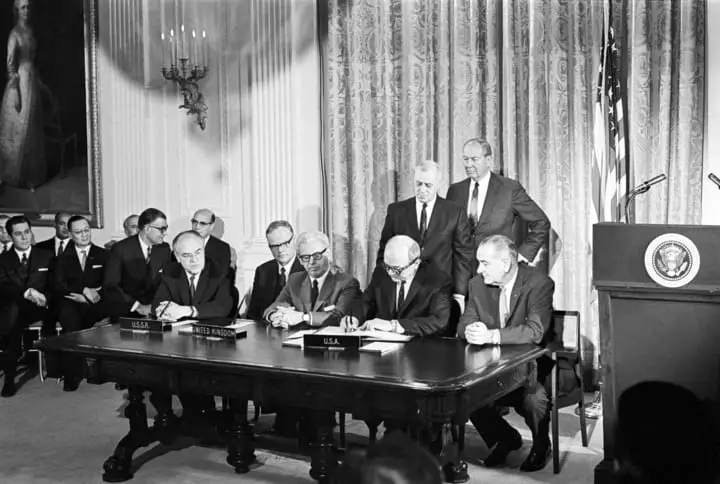
Science Vibe
In essence, the treaty allows for several competitors to battle over the resources within one asteroid. This space anarchy is a headache waiting to happen. And while other treatise have been signed into being since this Space Treaty, more red tape needs to be drawn to clarify the exact rules of asteroid mining.
27. Become A Professional Astrominer
Gears are in motion for the world of asteroid mining. The Colorado School of Mines, for instance, has created the first actual master’s and doctoral program in Space Resources. The degree focuses on the resources you can find in space and the ways in which you can extract and obtain them.

Arch2O
What such programs indicate is that the future is sincerely considering asteroid mining a feasible way through which to obtain and acquire resources. Perhaps the graduates will supersede other engineering programs as the most lucrative degree one can get. Either way, actually creating programs in asteroid mining is another step toward actually mining.
28. Bennu
Just to get a flavor of what sort of asteroids one is likely to encounter as an asteroid miner, here’s Bennu. Bennu is a near-earth asteroid that approaches earth once every six years. Scientists have determined that it is approximately 10 percent nickel and iron and worth something around the mark of $670 million dollars.
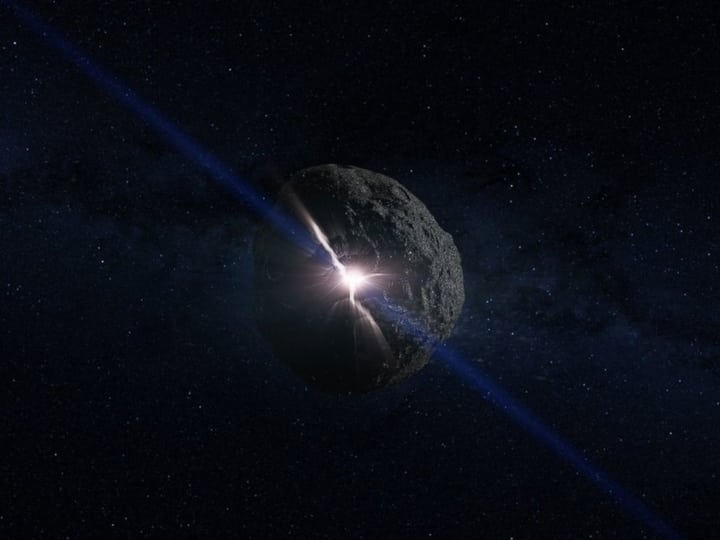
ABC News
Bennu is considered one of those potentially hazardous, near-Earth asteroids. It’s about a half a kilometer long in diameter and has a one in 2,700 chance of striking Earth. It is, in other words, one of those asteroids that will either kill us or yield a whole lot of platinum—or, possibly even both.
29. Ceres
Ceres is the largest object in the asteroid belt clocking in at a staggering 592 miles in diameter. Ceres was formed around the same time of the beginning of our solar system—around 4.6 billion years ago. It is an embryonic planet thought not able to accrue enough mass to become a planet.

Trinity News Daily
Ceres is so large that it makes up 25 percent of the asteroid belt’s total mass. Still, however, it is significantly smaller than the moon. To date, no company has had aspirations to mine this large and undeveloped celestial body. Regardless, it is one of the cooler things that space has to offer.
30. The Final Frontier
Ultimately, asteroid mining is one of the many ways in which we are relocating the human species across space and time. The prospect of in-space fueling stations opens the door for easier space travel. College programs allow students to aim their diplomas toward becoming a space miner or engineer with a focus in asteroid mining.
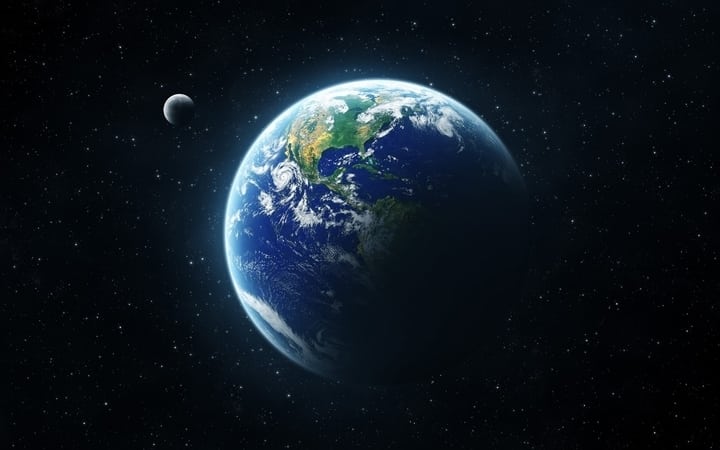
Nature’s Best
With an increased ability to migrate into space, interplanetary travel becomes a strong possibility. And with interplanetary travel comes the ability to fulfill our destiny as an multiplanet species. While it may seem far off in time, fictitious, or implausible, asteroid mining is coming. Let’s hope everything goes as planned.